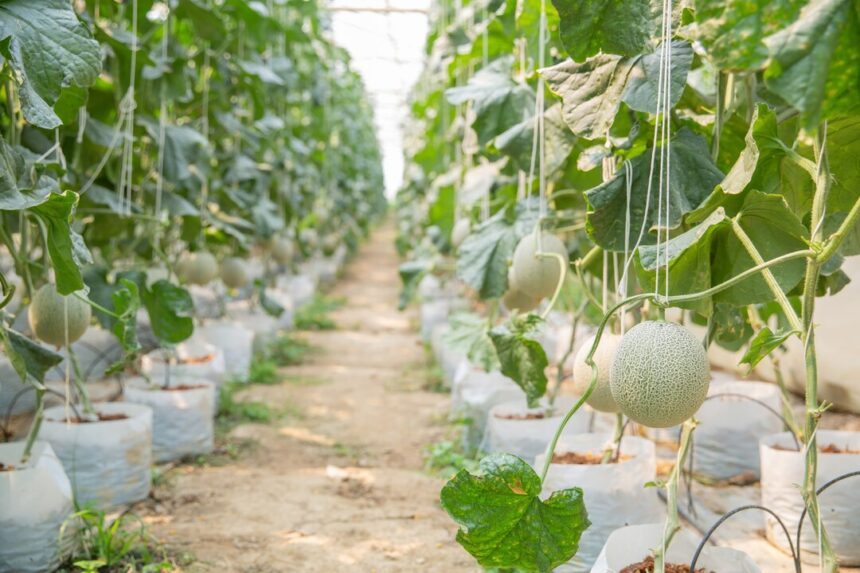Cantaloupes, also known as muskmelons or rockmelons, are a popular and nutritious fruit enjoyed by people around the world. In South Africa, cantaloupes thrive in the warm climate and are cultivated in various regions across the country. To ensure optimal quality and yield, farmers employ a range of techniques and practices designed to enhance growth, productivity, and fruit quality. Let’s explore some of the key techniques for enhancing the quality and yield of cantaloupes in South Africa:
1. Soil Preparation and Fertilization:
The first step in cultivating high-quality cantaloupes is soil preparation. Farmers should ensure that the soil is well-drained, rich in organic matter, and pH-balanced to support healthy plant growth. Soil testing can help determine nutrient deficiencies and guide fertilization practices. Cantaloupes require adequate levels of nitrogen, phosphorus, and potassium, as well as micronutrients such as calcium, magnesium, and boron, to thrive and produce high-quality fruit.
2. Proper Plant Spacing and Trellising:
Cantaloupes are vining plants that require ample space to spread and grow. Proper plant spacing is essential to prevent overcrowding, improve air circulation, and minimize the risk of disease. Trellising or supporting the vines with stakes or cages can help keep the fruit off the ground, reduce rotting, and promote uniform ripening. Additionally, trellising allows for easier harvesting and better access to sunlight, leading to improved fruit quality and yield.
3. Irrigation Management:
Cantaloupes require consistent moisture throughout the growing season to ensure optimal growth and fruit development. Irrigation management is crucial, especially during periods of drought or extreme heat. Drip irrigation or soaker hoses are recommended to deliver water directly to the roots while minimizing water waste and reducing the risk of foliar diseases. Monitoring soil moisture levels and adjusting irrigation schedules accordingly can help prevent water stress and ensure healthy plant growth.
4. Pest and Disease Management:
Pests and diseases can significantly impact cantaloupe production and reduce fruit quality and yield. Common pests affecting cantaloupes in South Africa include aphids, spider mites, cucumber beetles, and fruit flies, while diseases such as powdery mildew, downy mildew, and fusarium wilt can also pose challenges. Integrated pest management (IPM) practices, including crop rotation, companion planting, and the use of biological controls, can help minimize pest and disease pressure while reducing the need for chemical pesticides.
5. Pollination Enhancement:
Cantaloupes rely on pollinators, such as bees and other insects, for successful pollination and fruit set. To enhance pollination and maximize yield, farmers can plant pollinator-friendly flowers and provide habitat for bees and other beneficial insects. Additionally, hand pollination can be employed to ensure thorough pollination of flowers, especially in areas with limited insect activity or during periods of inclement weather.
6. Fruit Thinning and Pruning:
Thinning excess fruit and pruning excess foliage can help redirect the plant’s energy towards fewer, larger fruits, resulting in improved fruit size, quality, and sweetness. Thinning should be done when the fruit is small, leaving only one or two fruits per vine to develop to maturity. Pruning can also help improve air circulation, reduce disease pressure, and promote better fruit ripening.
7. Harvesting at the Right Time:
Harvesting cantaloupes at the right time is essential to ensure optimal flavor, sweetness, and quality. Cantaloupes are typically ready for harvest when they develop a creamy yellow or orange color, emit a sweet aroma, and have a slightly soft texture at the blossom end. Harvesting too early can result in underripe fruit with poor flavor and texture, while harvesting too late can lead to overripe fruit with reduced sweetness and shelf life.
In conclusion, by employing these techniques and practices, farmers in South Africa can enhance the quality and yield of cantaloupes, resulting in higher profits and greater market competitiveness. By prioritizing soil health, proper plant spacing, irrigation management, pest and disease control, pollination enhancement, fruit thinning, and timely harvesting, farmers can produce premium-quality cantaloupes that meet consumer demand for fresh, flavorful, and nutritious fruit.
Join 'Farmers Mag' WhatsApp Channel
Get the latest Farming news and tips delivered straight to your WhatsApp
CLICK HERE TO JOIN






